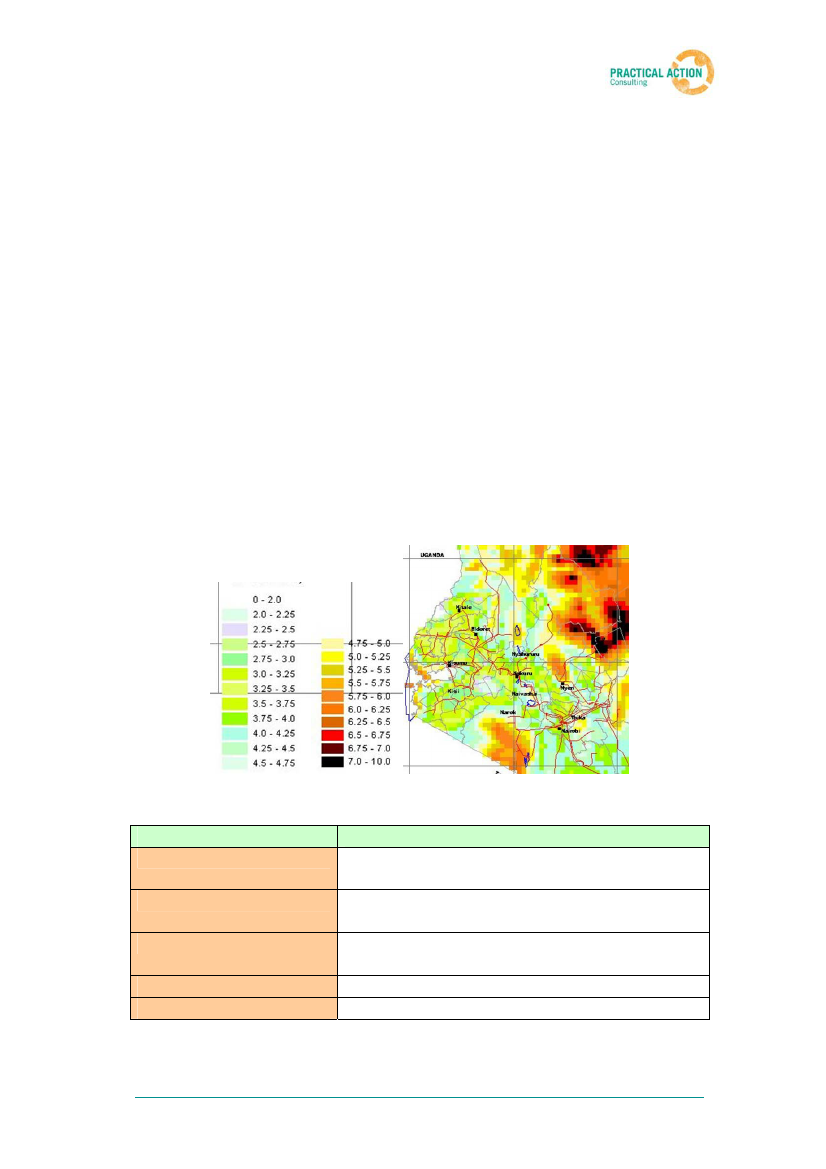
flowing river or canal as the source for the water pump. It floats in the free stream
of the river and pumps water onto the bank.23 Water powered pumping
technologies can provide a cheap and reliable supply of water in the right situation.
Projects require careful assessment and design by an experienced technical
person and regular maintenance from a trained local user.
2.4.
Wind energy technologies
Wind power can be harnessed for both generation of electricity (wind generators)
and irrigation (wind pumps). The amount of energy produced from wind energy
technologies is variable because it is dependent on the wind speed, which is
constantly changing. 24 A good assessment of the wind resource, that may include
wind speed measurements, is important for wind energy projects. Wind maps
present wind resource data based upon wind speed measurements and computer
modelling. Figure 4 shows a wind map for an area of Kenya. Areas with a good
wind resource (high average wind speeds) can be identified by colour. A wind map
is useful for high level identification but verification by site visits and measurements
may be required.
Figure 4: Wind map from an area of Kenya (colours relate to average wind
speed bands): SWERA.25
Table 5: Resource potential for different wind speeds: E-mindset4
Average annual wind speed
Below 3 m/s
Between 3 and 4 m/s
Between 4 and 5 m/s
More than 5 m/s
More than 6 m/s
Possibilities for wind energy use
Not usually viable, unless special circumstances
exist
May be an option for wind pumps; unlikely to be
viable for small wind turbines (SWT)
Wind pumps may be competitive with diesel pumps:
SWTs may be viable
Viable for wind pumps and SWTs
Excellent potential for wind pumps and SWTs
Renewable Energy to Reduce Poverty in Africa
20